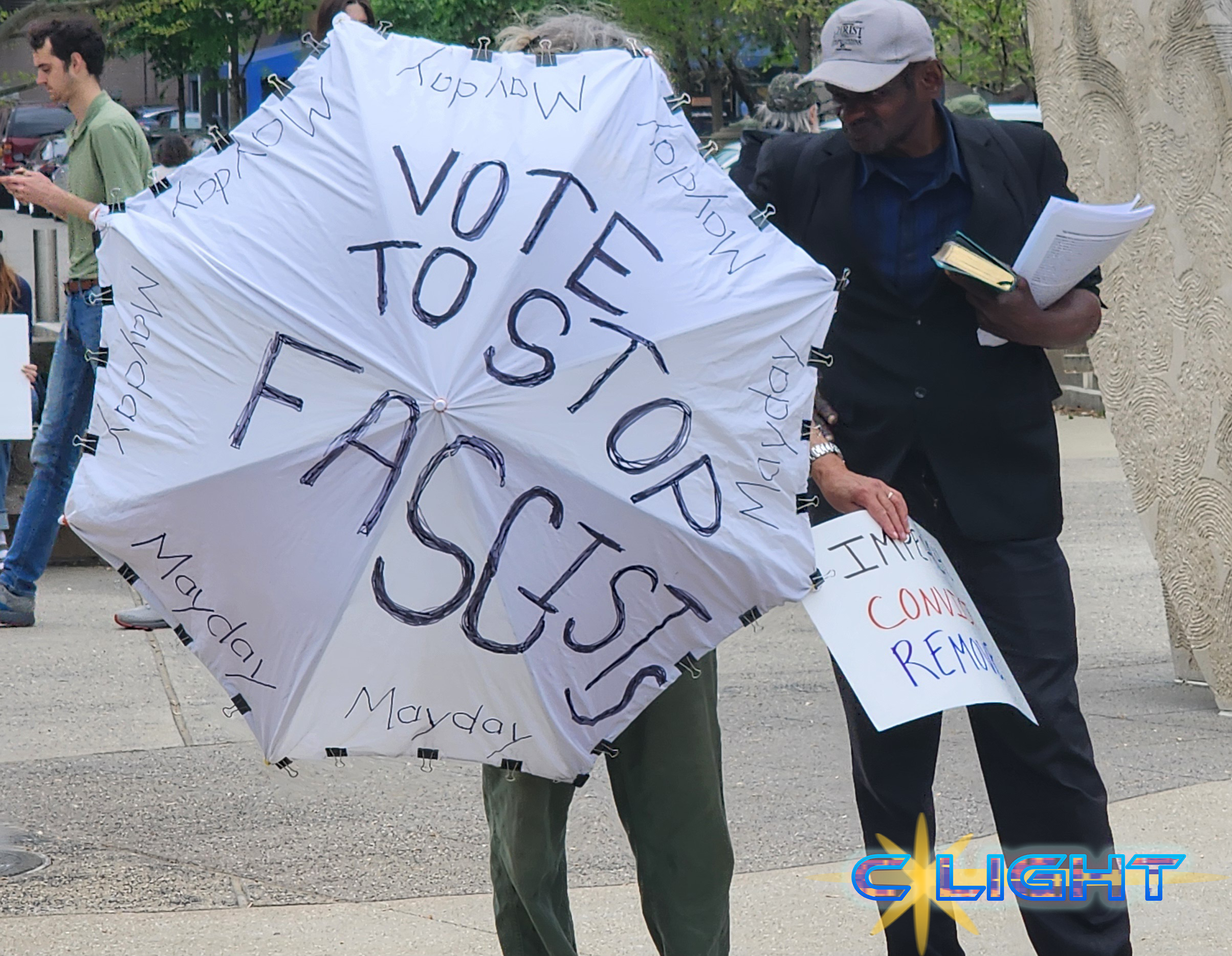I’d been anticipating the May Day rally at the Indiana Statehouse for weeks. Getting out is a hurdle these days, and unpredictable weather often confines me to watching events from home. Missing the last rally had spurred Jenn and me to make a firm commitment to attend this one, come what may. Kat also wanted to join us.
Ironically, of the three of us, I was the one in the best health over the past two weeks. Jenn had been struggling with breathing, and Kat with nausea – a less than ideal picture. Thankfully, Jenn felt well enough today to drive me downtown, with the understanding that we’d leave if her breathing became difficult. Kat, unfortunately, had to stay home. After leaving instructions for Our Staff, we set off into downtown Indianapolis.
Arriving at the rally, my first thought was whether it had already begun. Our parking spot in a nearby facility offered no hint of noise, which concerned me. As we drew closer, however, it became clear that the organizer was still speaking, expressing gratitude and providing directions. I scanned the crowd for familiar faces. Scott Wheeler was busy distributing signs and didn’t seem to notice us initially, which was fine; we connected later.
Two other speakers followed. Their speeches were well-delivered but reiterated what the audience already knew. The slumped shoulders and impatient looks told a story: this wasn’t a crowd that needed a primer on why they were there. Many expressed their sentiments through their signs, but the expressions on their faces were even more telling. These were good people, I truly believe, but they were also clearly angry.
This wasn’t the stereotypical image of youthful protestors. While some may have embraced that counter-culture in their past, this crowd was largely comprised of grandparents and great-grandparents. Some were seated on low-lying light displays, while others relied on mobility aids. (One could imagine a brisk business in prune juice if offered.) Of course, there were younger individuals like Jenn, and a few seemed to have come from nearby workplaces, but the majority were my age or older – people with the daytime flexibility to attend a Thursday noon rally.
After a little over an hour of speeches, the crowd, numbering perhaps 400-500, began to show signs of restlessness. Naptime was approaching for many, myself included. As the others moved off to march around the statehouse, Jenn gave me a knowing look. Marching was out of the question for us; her lungs wouldn’t tolerate it, and likely neither would mine. We turned towards the car, saying goodbye to Scott along the way.
Crossing the street, I paused to listen. The sounds of their marching and chanting didn’t carry. It struck me that people our age often lack the lung capacity for simultaneous walking and yelling – a skill our bodies seemed to discard around the time our children left home. If I couldn’t hear them, I doubted the lawmakers inside the statehouse could either.
I am a strong believer in the people’s right to protest. And while the Constitution guarantees peaceful assembly, I’m not convinced that these gentle, leisurely protests are enough to spur meaningful action.
Firstly, protests need to be loud. I watched the windows of the statehouse and surrounding buildings. In an effective protest, those windows should be vibrating with the intensity of the noise. The loudest point today, with everyone chanting, likely didn’t exceed 35 dB. Effective protest requires a noise level that surpasses typical street noise, which ranges from 40-70 dB. A protest has a responsibility to make its presence and displeasure known, signaling a potential force that legislators must consider.
Secondly, protests need to be disruptive. They should create a tangible obstacle for those going about their day. I recall the Vietnam War protests of my youth; those activists wouldn’t have been content marching away from the statehouse. They would have aimed to march through it, demanding attention. Today, there was no disruption of the peace whatsoever.
State police were present, a precautionary measure, but they were relaxed, without riot gear. They chatted with protestors, petted dogs, and seemed to be enjoying a break from the office. There was no sense of urgency or threat. These individuals were going to peacefully assemble for a couple of hours and then go home. Nothing would change.
It troubles me that even during this critical time in the administration, more people aren’t compelled to drop everything and, in the words of the late John Lewis, “Make good trouble.” No one demanded to see the governor (who likely wasn’t present) or their local legislators (who entered and exited unseen by the protestors). There were chants about demands, but no indication of potential consequences if those demands weren’t met.
I support protests wholeheartedly. I believe in their potential power. But these current iterations have a significant distance to travel before they achieve that kind of impact.
On the other hand, as we stood near the statehouse, observing the stubbornly still windows, I remarked to Jenn that I could probably still break a second-story window.
She laughed.
Good trouble.


















Discover more from Clight Morning Analysis
Subscribe to get the latest posts sent to your email.










